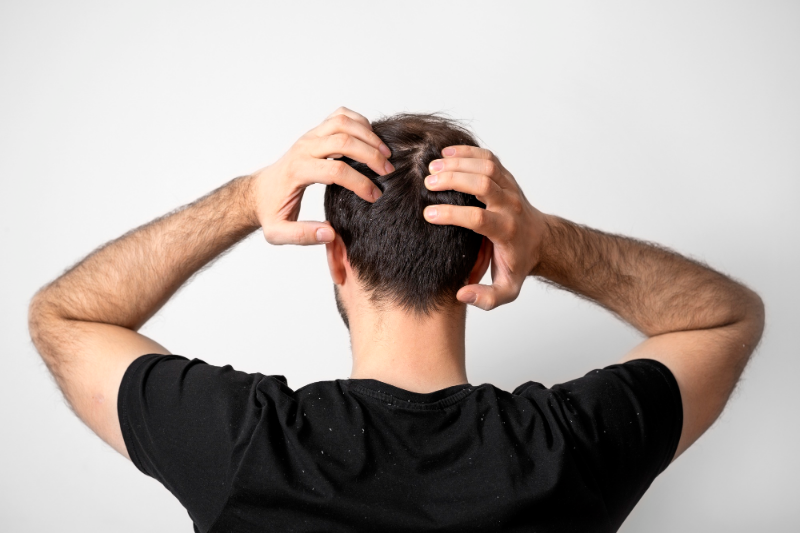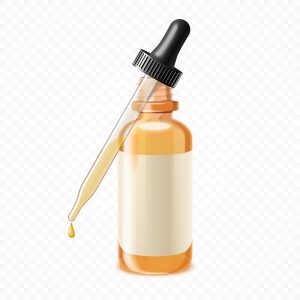Minoxidil and Itching: How to Manage This Common Problem?

Minoxidil and Itching – Minoxidil is a topical medication widely used to treat hair loss, including male and female pattern baldness. Although it is effective in stimulating hair growth, many users experience one annoying side effect: itchy scalp. If you are one of those users struggling with this problem, don’t worry, because there are ways to manage the itch while still getting the benefits of minoxidil. In this article, we’ll explore the causes of minoxidil-related itching and give you tips for relieving it.
Minoxidil and Itching: Why Does Minoxidil Cause Itching?
Itchy scalp from minoxidil is a common side effect, but it is not universal. Some people experience them mildly, if at all, while others may find them very bothersome. Several factors contribute to this itching:
1. Reaction to Propylene Glycol
The standard minoxidil formulation contains propylene glycol , an agent that helps the medication penetrate the skin. However, some people may be sensitive to propylene glycol and develop skin irritation, leading to itching.
2. Dry Skin
Skin irritation and itching are more common in people who already have dry or sensitive skin. Minoxidil may make this pre-existing condition worse.
3. Allergic Reaction
Minoxidil and itching: In rare cases, some people may develop a true allergy to minoxidil, which causes severe itching. If you suspect an allergic reaction, it is essential to consult a healthcare professional.
4. Incorrect Application
Improper application of minoxidil can also cause itching. Be sure to follow the product’s instructions, especially avoiding applying it to irritated or damaged skin.
How to Reduce Itching Related to Minoxidil?
Now that we have identified the potential causes of itching, here are some tips to alleviate it and continue your hair treatment without major discomfort:
1. Use a Propylene Glycol-Free Formulation
If you suspect propylene glycol is the source of your itching, consider switching to a propylene glycol-free formulation of minoxidil. Many brands offer hypoallergenic alternatives.
2. Minoxidil and itching: Moisturize Your Scalp
Dry skin can be one of the main causes of itching. Use a gentle moisturizing shampoo and conditioner to maintain hydration in your scalp.
3. Avoid Application to Irritated Skin
Do not apply minoxidil to irritated, damaged or sunburned skin. Wait until your skin has fully recovered before continuing treatment.
4. Reduce the Frequency of Application
If itching persists, consider reducing the frequency of minoxidil application. Instead of applying it twice a day, try one application daily or every other day to see if it relieves the itching while maintaining the effectiveness of the treatment.
5. Consult a Health Professional
Minoxidil and itching: If the itching becomes intolerable or is accompanied by other symptoms such as severe rashes, it is crucial to consult a healthcare professional. You may be allergic to minoxidil or have another condition that requires medical attention.
6. Use a Soothing Shampoo
There are shampoos specially formulated to soothe irritated scalp. Look for products with calming ingredients such as aloe vera, chamomile, or colloidal oatmeal.
7. Be Patient
Minoxidil and itching: Minoxidil-related itching is often temporary and gets better over time. Continue to follow your treatment routine, and the itching may gradually disappear.
In conclusion, itchy scalp from minoxidil can be a bothersome side effect, but there are ways to alleviate it and still receive the hair regrowth benefits of this medication. By following the tips above and paying attention to your own reaction to this treatment, you can effectively manage itching and maintain healthy hair. Remember to consult a healthcare professional if itching persists or worsens to rule out a serious allergic reaction.

CONCLUSION
In conclusion, itching associated with minoxidil use is a common problem, but it can be managed effectively while still benefiting from the positive effects of this hair loss treatment. It is essential to understand the possible causes of this itching, including sensitivity to propylene glycol, dry skin, and allergic reactions, in order to take appropriate action.
Adopting simple practices, such as using propylene glycol-free formulations, hydrating the scalp, avoiding application to irritated skin, and reducing the frequency of application, can provide significant relief. itching. Additionally, using soothing shampoos and consulting a healthcare professional if you experience severe symptoms are important steps to ensure your comfort and safety.
Patience is crucial as the itching tends to lessen over time. By persevering with your hair treatment and adapting your routine according to your needs, you can achieve your hair regrowth goals while minimizing the discomfort associated with itching. Remember that everyone reacts differently to minoxidil, so listen to your body and adjust your approach accordingly to get the best results.
____
Léa is a prolific writer specialising in beauty, with a primary focus on hair transplant procedures and a wide range of other beauty-enhancing techniques. Her insightful articles are trusted by professionals and consumers alike, offering a blend of expertise and engaging style. Lea’s work has appeared in top publications, and she’s known for demystifying complex beauty topics, making them accessible to a broad audience. Her passion for the transformative power of beauty shines through her writing, making her a sought-after contributor for leading beauty brands.
